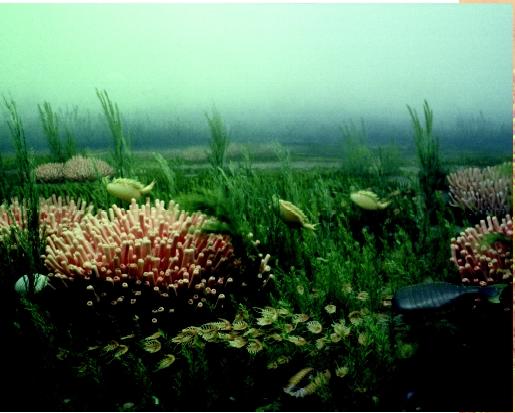Cambrian Explosion

Scientists agree that the Cambrian explosion is one of the most significant events in the history of life. It is marked by a series of biological changes that took place over a relatively short period of geologic time during the early Cambrian, 543 to 520 million years ago. (The entire Cambrian period ranged from 543 to approximately 490 million years ago.) First and foremost, the Cambrian explosion is marked by the global appearance of organisms with skeletal hard parts in the fossil record in contrast to the strictly soft-bodied creatures prior to this. Initially, these skeletal structures were simple in design, such as minute cylindrical tubes, tiny cones, and rudimentary jawlike appendages . However, they evolved rapidly into larger and more elaborate structures comparable to the exoskeletons of many living invertebrate groups. These early skeletons were constructed from a diverse array of materials that form the building blocks of skeletons to this day, including calcium carbonate, calcium phosphate, and silica.
Coincident with the appearance of skeletons was the phenomenal diversification of metazoan life. Paleontologists Stephen Jay Gould in Wonderful Life (1989) and Simon Conway Morris in Crucible of Creation (1998) provide detailed, popular accounts of the amazing evolution of Cambrian animals, though they reach somewhat different conclusions with regard to the implications for the subsequent history of life.
However, all paleontologists agree that virtually all of the modern invertebrate groups made their first definitive appearance in the early Cambrian, including phylum Annelida (worms), phylum Mollusca (clams, snails, cephalopods), phylum Echinodermata (starfish, urchins, sea lilies), phylum

Many scientists correlate the abrupt appearance of skeletons and the burst of biotic evolution in the early Cambrian with chemical changes in the world ocean, specifically an increase in the concentration of oxygen. Many scientists also point to the evolutionary first appearance of predatory lifestyles, with organisms adapting to this new ecological pressure with the construction of protective skeletons and the selection of burrowing habits. (An animal residing beneath the sediment surface is far less likely to be preyed upon.) Still others suggest that the relatively wide-open Cambrian oceans were an ideal setting for large-scale evolutionary experimentation and the origin of Phyla. Regardless of the driving mechanisms, the Cambrian explosion will forever remain one of the defining episodes in the history of life on Earth.
SEE ALSO Evolution
Raymond R. Rogers
Bibliography
Conway Morris, Simon. The Crucible of Creation. Oxford: Oxford University Press, 1998.
Cowan, Richard. History of Life. Boston: Blackwell Science Inc., 2000.
Gould, Stephen J. Wonderful Life. New York: W. W. Norton and Company, 1989.